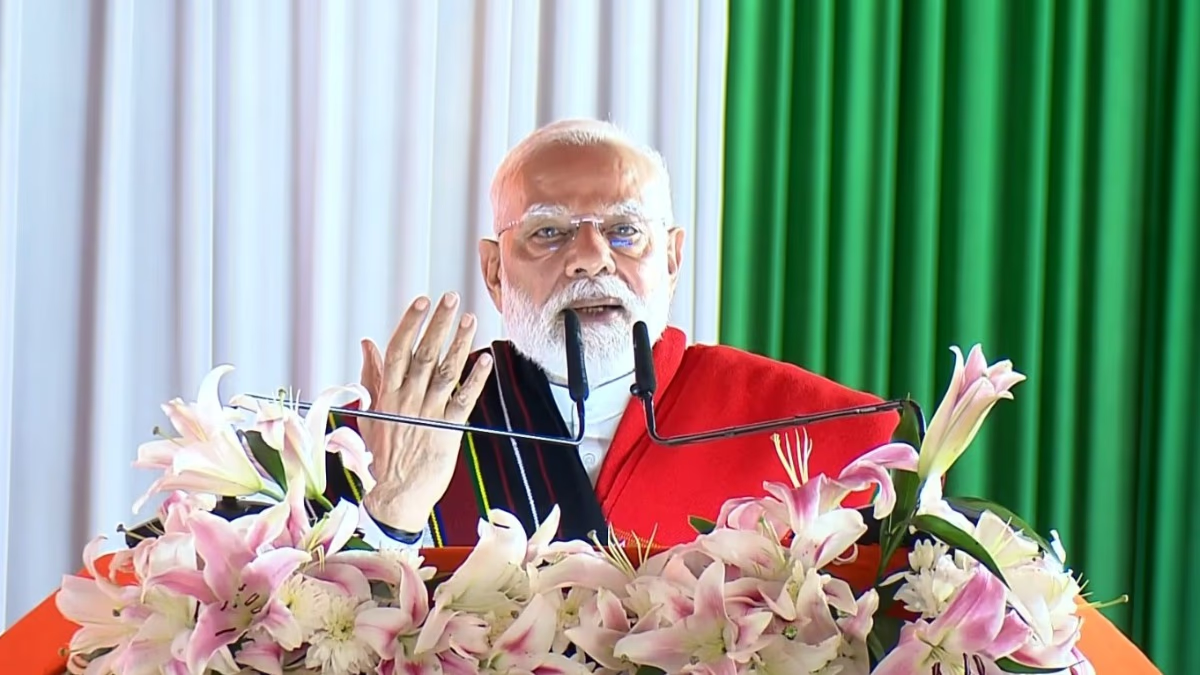The nation's capital, Delhi, is currently facing a severe water crisis, with multiple areas declared as 'Dry Zones'. Delhi reports a daily water shortfall of 50 million gallons. Residents are seen desperately scrambling for each precious drop of water. Politics continue to play a part in the crisis, with the ruling Aam Aadmi Party government in Delhi accusing Haryana of failing to supply adequate water.
After Haryana refused to provide additional water, Delhi's water crisis has escalated to a legal battle. However, the plight is not limited to Delhi—harsh summers have fueled increased consumption of electricity and water nationally, leading to acute water scarcity in many metropolitan areas like Delhi and Bangalore.
Lakhs suffer due to declining water levels, a situation exacerbated by climate change and exacerbated by overuse and wastage. Reports indicate that an average Indian squanders 30 percent of their daily water needs. According to the U.S. Geological Survey, a faucet dripping 10 drops per minute wastes about 3.6 liters of water daily, while each toilet flush utilizes approximately six liters.
Down To Earth magazine states, "An estimate of water wastage suggests that around 484.2 billion cubic meters of water is wasted every day, amounting to 48.42 billion one-liter bottles, while about 160 million people in the country do not have access to clean and fresh water."
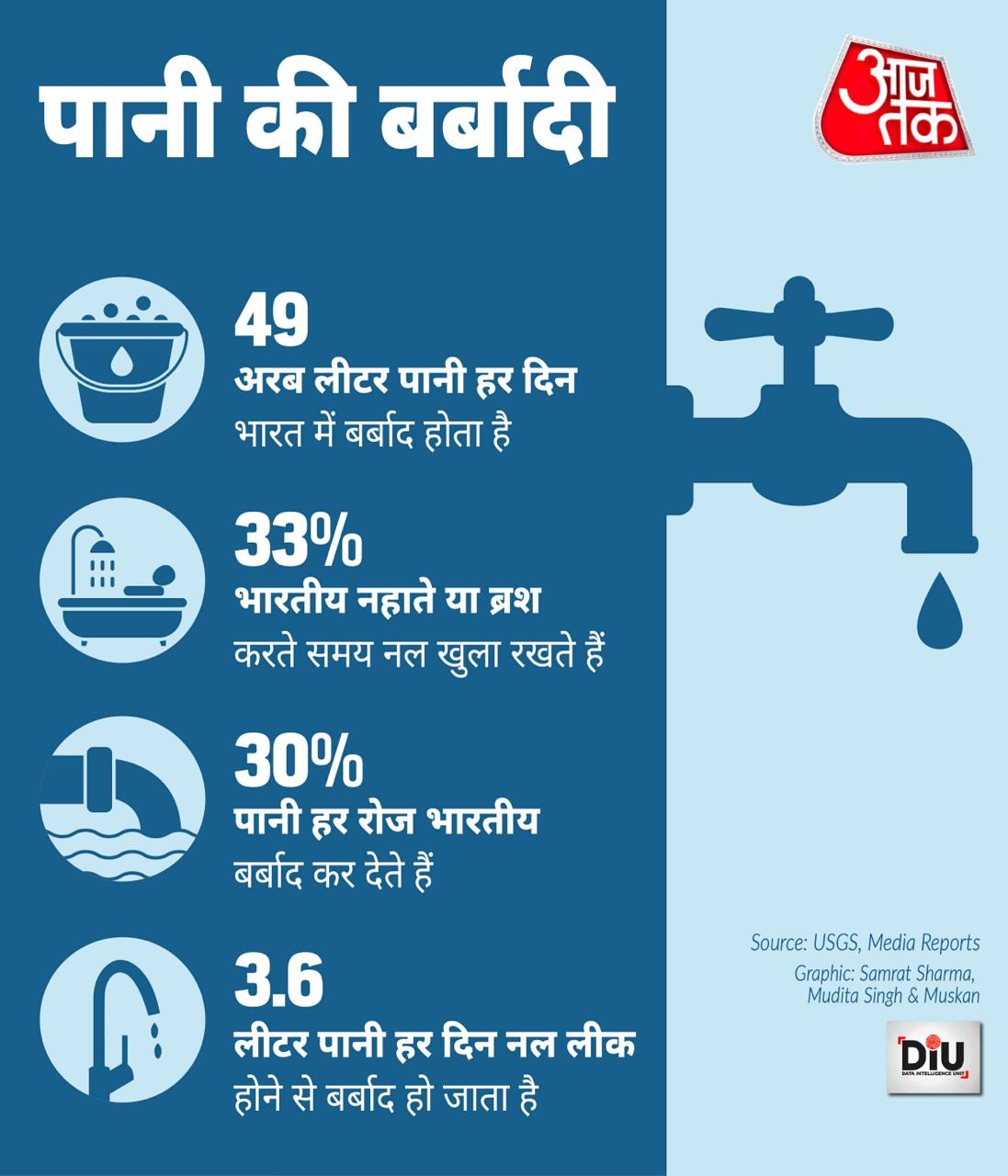
Source: aajtak
How Severe is India's Water Crisis?
India accounts for roughly 18 percent of the global population but only holds four percent of the world's fresh water resources. The World Bank suggests that the per capita water availability in India, roughly 1,100 cubic meters, indicates a severe shortage. As a reference, water scarcity is considered when per capita availability falls below 1,700,000 liters, and a water crisis is declared below 1,000,000 liters. In comparison, the global per capita water availability stands at 5,500 cubic meters.
The nation's growing population and economic development have placed immense pressure on water resources. Half a century ago, in 1970, per capita freshwater availability in India was more than double the current rate. The World Bank reports that it has steadily decreased to 1,661 cubic meters by 1990 and to 1,036 cubic meters by 2020.
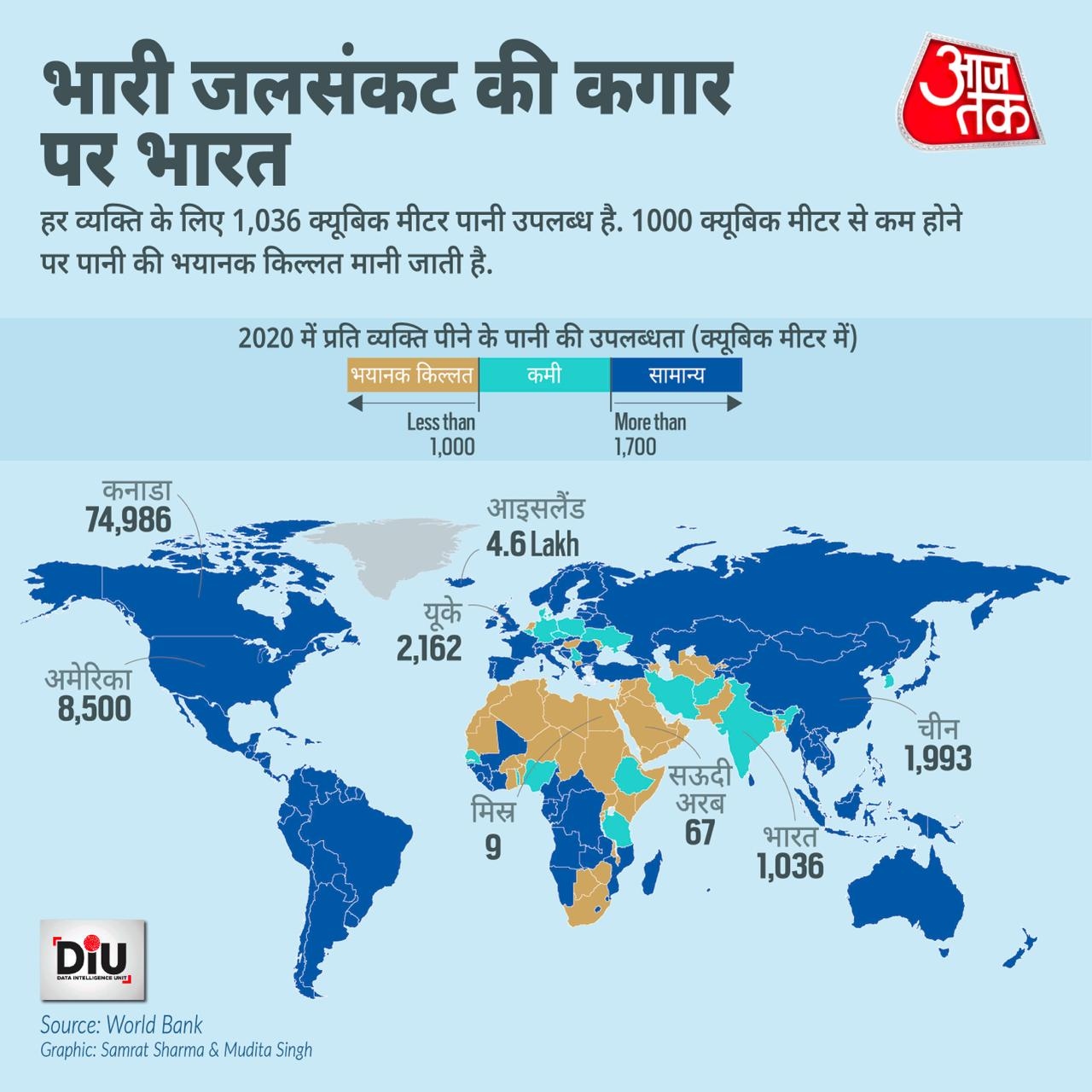
Source: aajtak
India's Water Crisis Escalates
North and North-Western India are enduring greater challenges compared to other regions. In 2020, Punjab extracted a staggering 164.4 percent of its water, surpassing its limit. According to the Ministry of Jal Shakti, Rajasthan exploited 150.2 percent of its annual groundwater, Haryana 134.6 percent, and Delhi 101.4 percent in the same year.
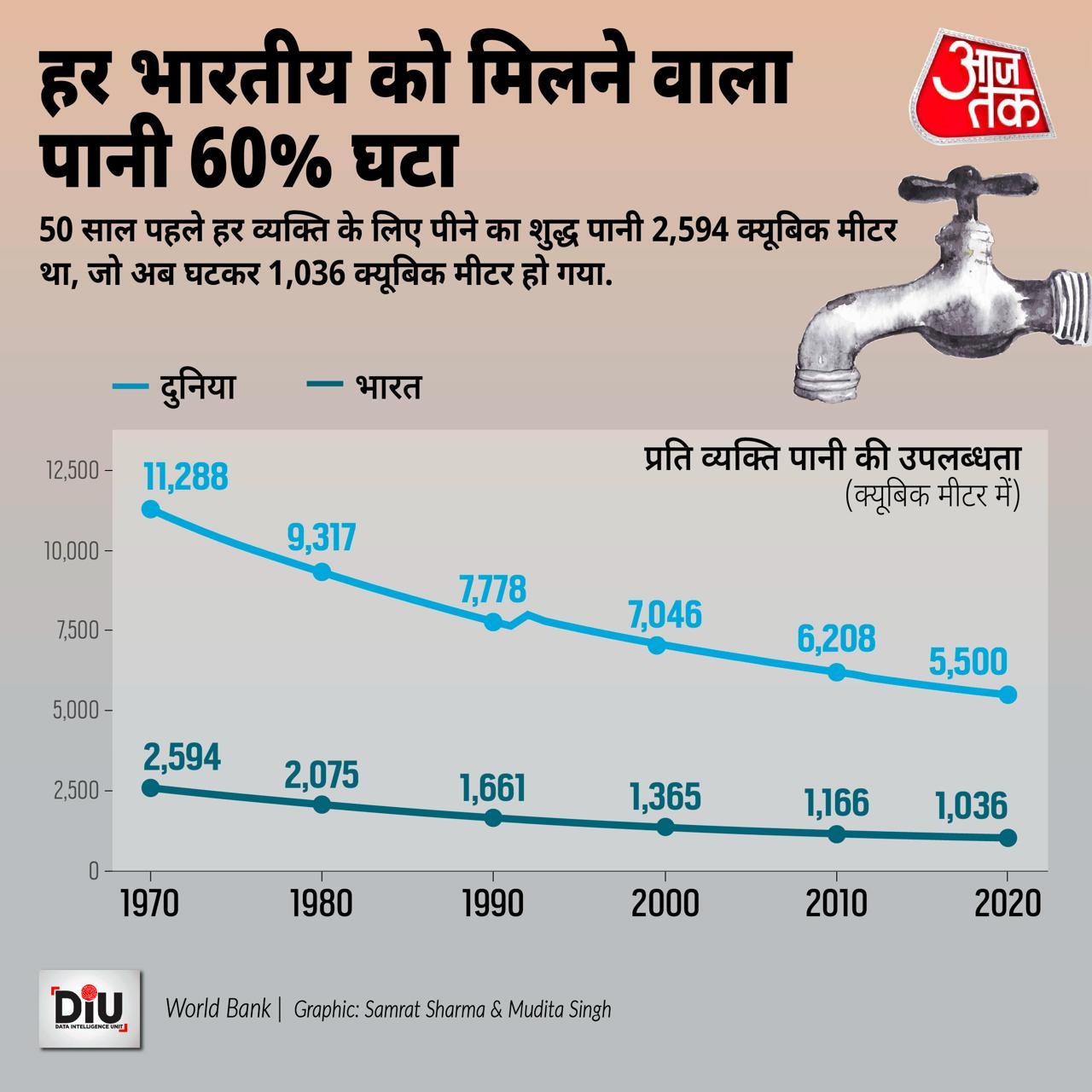
Source: aajtak
Is the Water Scarcity Comparable Worldwide?
The issue of freshwater scarcity is more acute in India than globally. Out of 197 countries, India ranks 141st in terms of per capita water availability. In stark contrast, Iceland tops the chart with per capita access to 460,000 cubic meters, Canada has 74,986 cubic meters, and Russia 29,929 cubic meters.
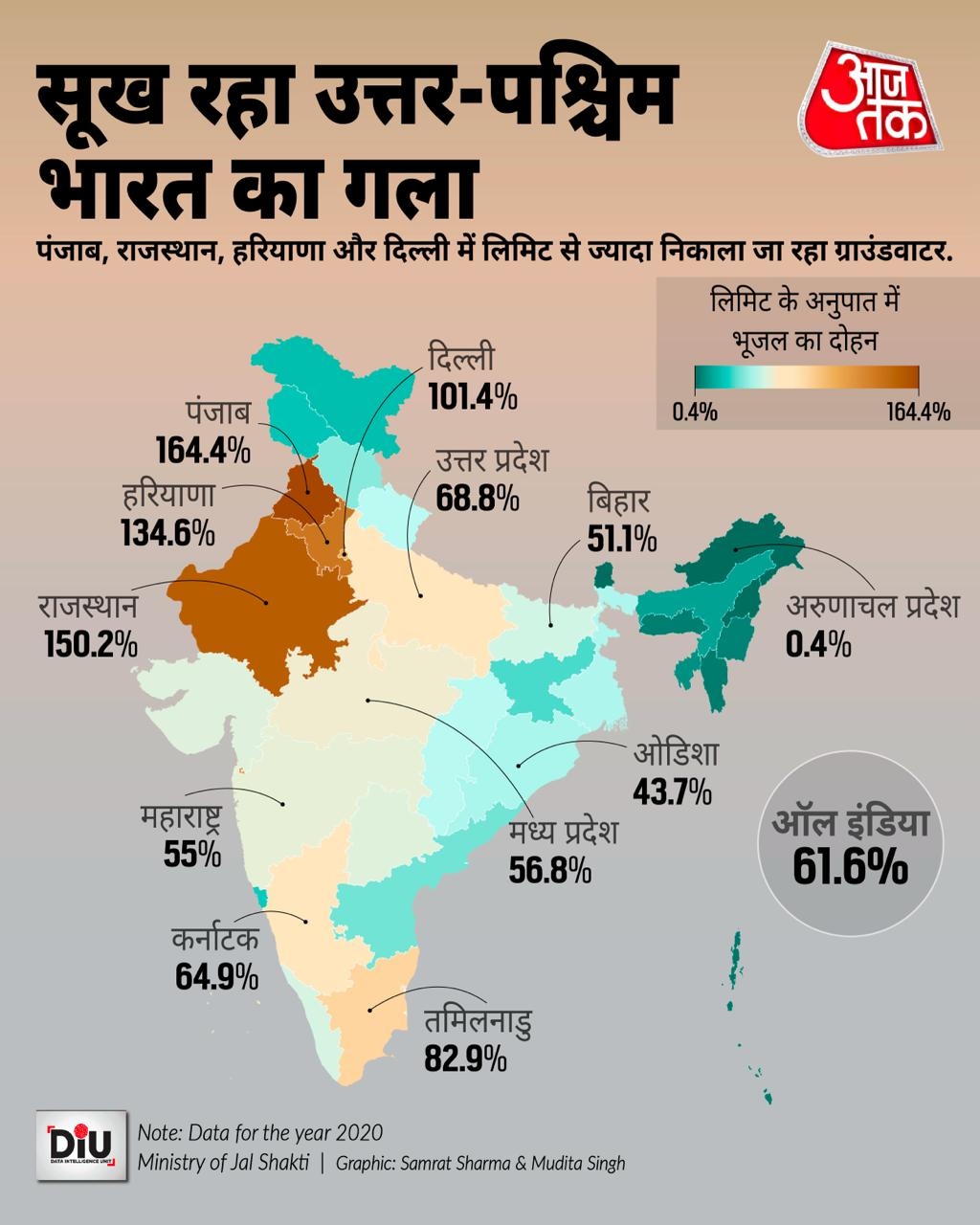
Source: aajtak
Despite the extreme water crisis, the country's water usage remains high, and in many areas, residents crave every last drop.



